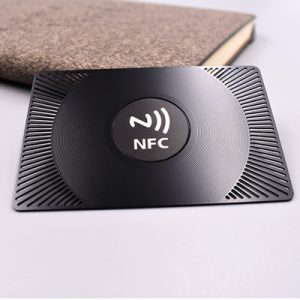The creation of metal cards involves both scientific and technological processes that ensure their durability, aesthetics, and functionality. Here’s an overview of the science behind metal cards:
- Materials Selection: The choice of materials is crucial in creating metal cards that are both aesthetically pleasing and functional. Common materials include stainless steel and titanium due to their strength, corrosion resistance, and ability to be engraved or etched with intricate designs.
- Metallurgy: The science of metallurgy is involved in shaping and forming metal sheets into the desired card shape. This process can involve cutting, stamping, and pressing the metal sheets using specialized machinery.
- Surface Treatment: Metal cards often undergo surface treatments to enhance their appearance and protect against wear and tear. Processes like polishing, brushing, and sandblasting are used to achieve various finishes such as glossy, matte, or textured surfaces.
- Laser Etching: Laser technology is used to etch intricate designs, logos, and personalized information onto the surface of metal cards. This process requires precision to achieve detailed and accurate results.
- Embossing and Debossing: These processes involve raising or pressing designs onto the surface of the card. They add a tactile dimension to the card’s appearance and can be used to display important information like card numbers.
- Security Features: Metal cards incorporate security features such as EMV chips and RFID blocking technology to protect against fraud and unauthorized access. These features are based on principles of cryptography and electronic communication.
- Contactless Technology: NFC (Near Field Communication) technology enables contactless payments using metal cards. This technology is based on electromagnetic principles and allows for secure data transfer between the card and the payment terminal.
- Weight Distribution: The weight distribution of the metal card is considered to ensure comfortable handling and usage. The distribution of metal thickness and weight affects how the card feels in hand and when swiped or inserted into card readers.
- Durability Testing: Scientific testing methods are employed to ensure that metal cards can withstand the rigors of everyday use. This includes testing for scratch resistance, corrosion resistance, and durability under various conditions.
- Environmental Considerations: The materials used in metal cards may have environmental impacts. As a result, scientific considerations include the sustainability of materials, recycling potential, and the overall carbon footprint of the card’s production.
- Heat and Cold Resistance: Metal cards need to be designed to withstand varying temperatures without warping or losing functionality. Scientific analysis ensures the card’s integrity under extreme conditions.
- Vibration and Wear Testing: Metal cards, like any other products, undergo vibration and wear testing to ensure they remain functional and maintain their appearance over time.
In essence, the science behind metal cards combines materials science, metallurgy, laser technology, electronics, and various testing methodologies to create a product that balances aesthetics, durability, security, and functionality. The collaboration of these scientific principles and processes results in the premium and innovative payment solution that metal cards represent.


























